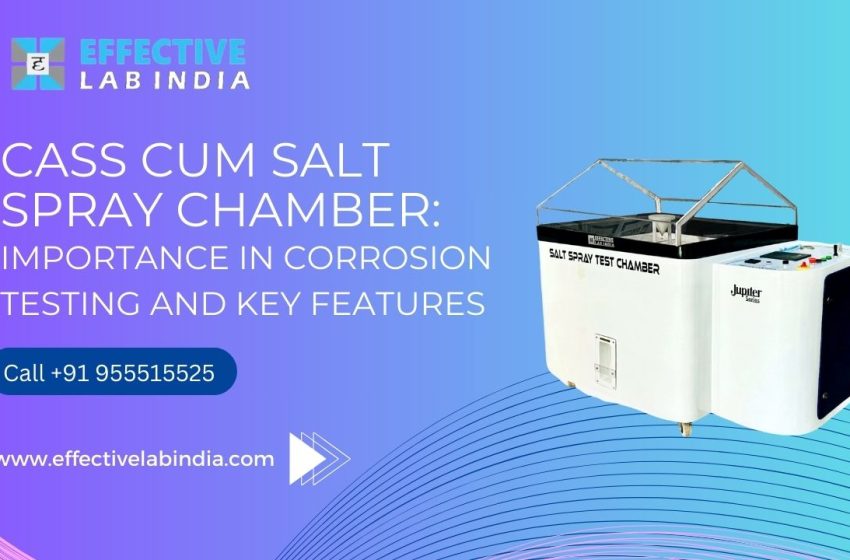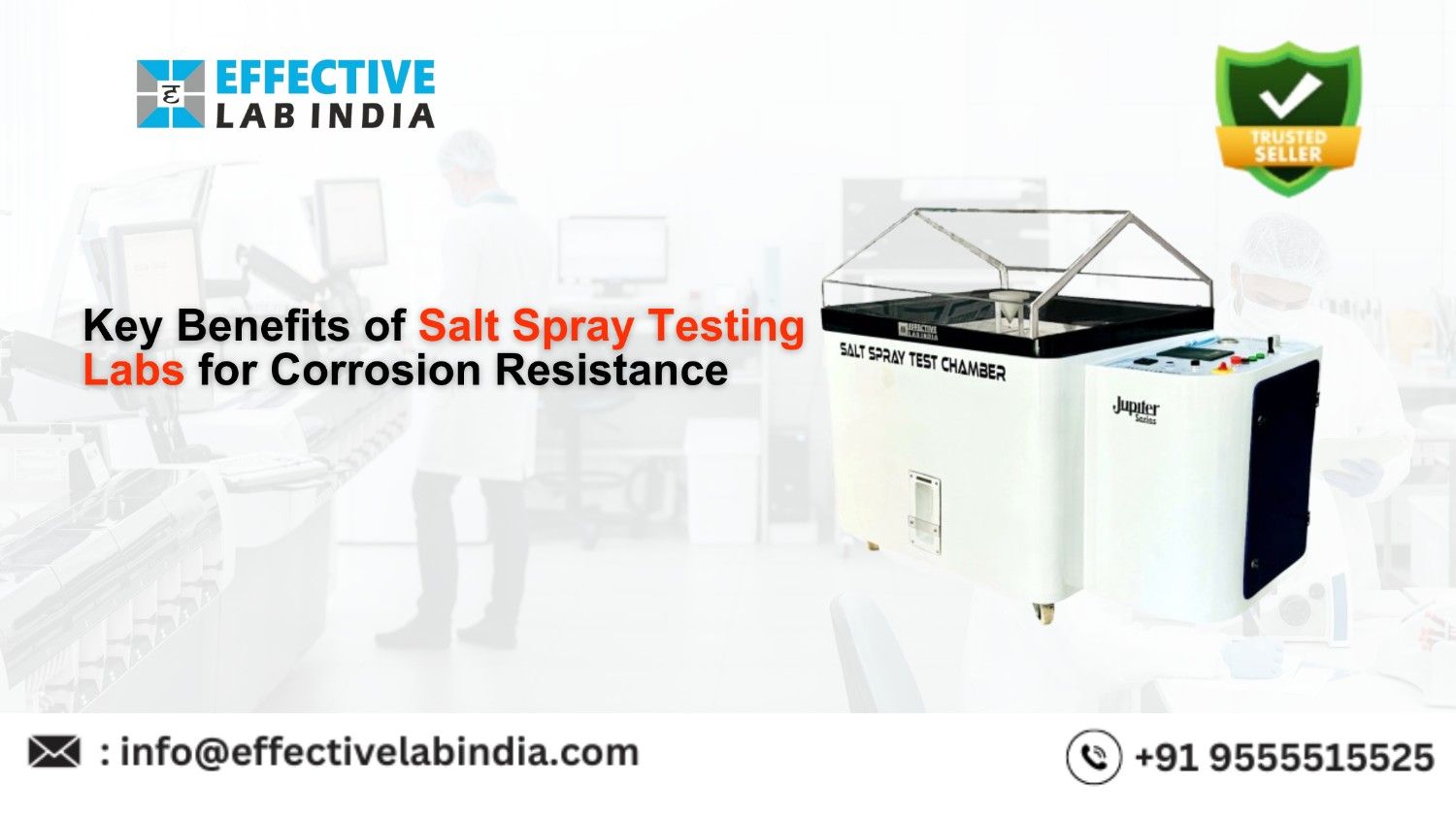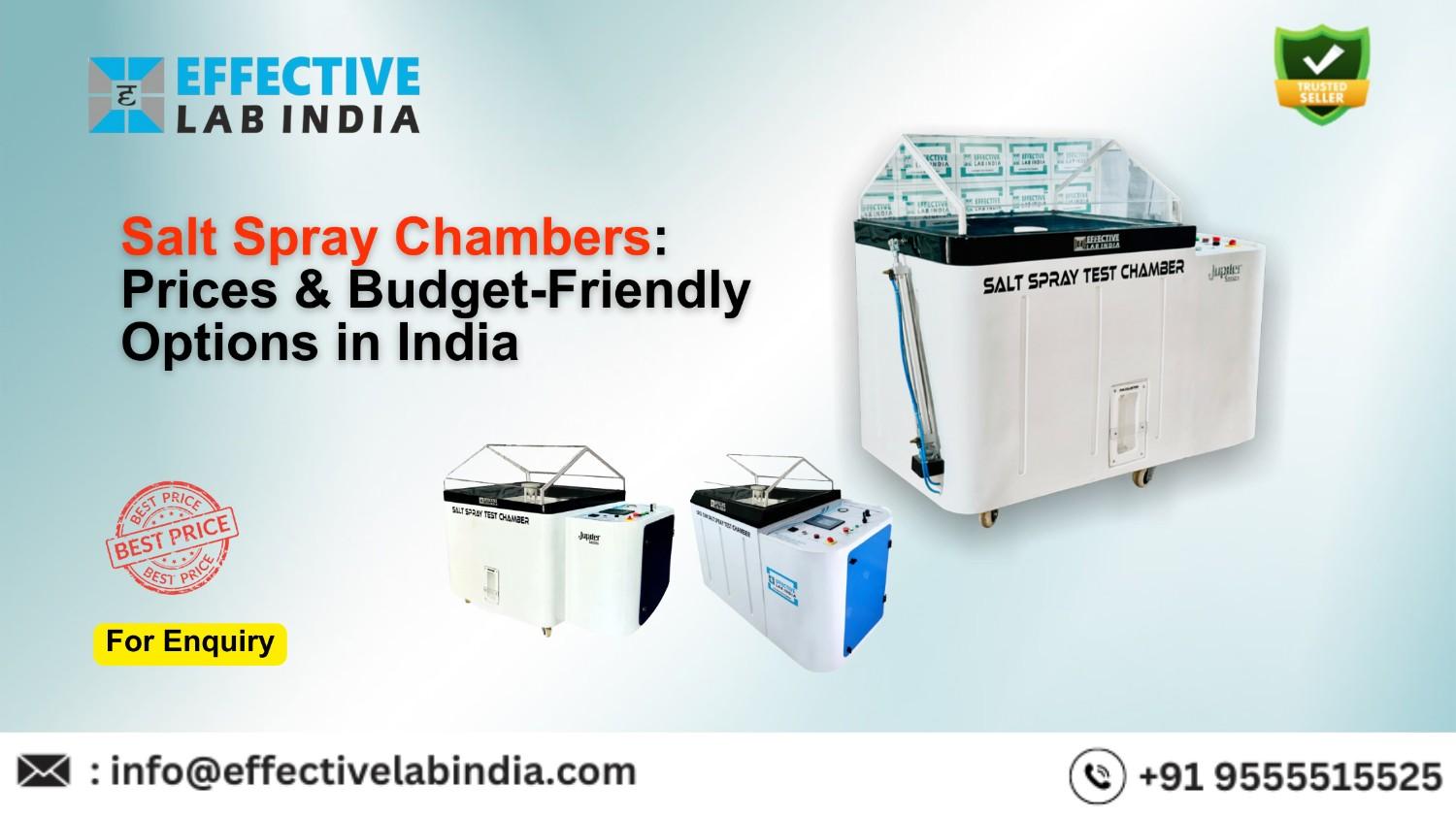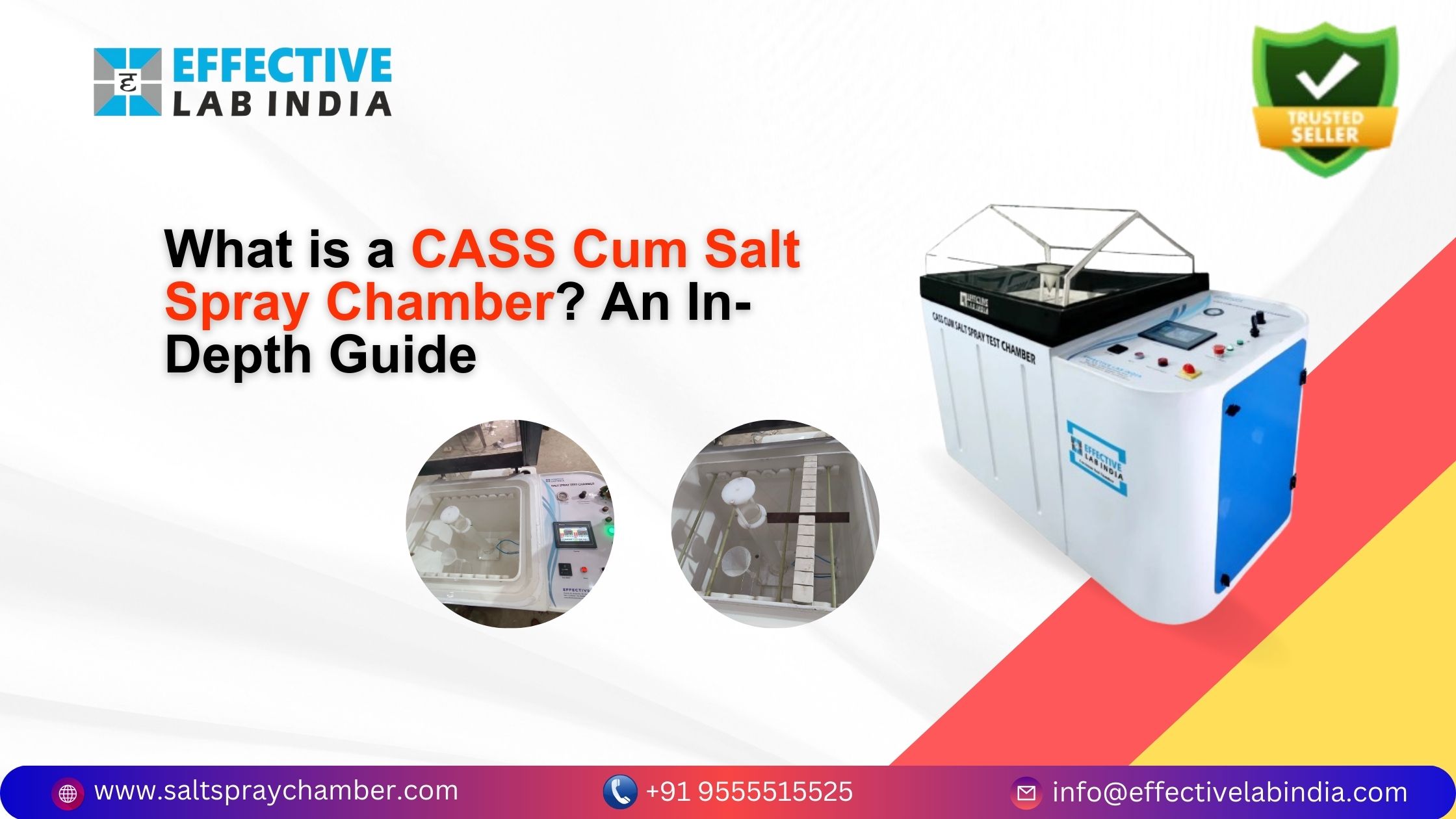Cass Cum Salt Spray Chamber: Importance in Corrosion Testing and Key Features

In manufacturing industries where materials’ robustness and longevity are crucial, corrosion testing is essential to safeguarding the quality of the final product. An extremely sophisticated technique for assessing corrosion resistance is the use of a Cum Salt Spray Chamber(Copper-Accelerated Acetic Acid Salt Spray), or CASS. With the help of this testing instrument, which replicates extremely corrosive environments, manufacturers can assess how well materials will stand up over time under extremely harsh conditions.
We will discuss the definition of a CASS Cum Salt Spray Chamber, its use in corrosion testing, and the important features that make it essential for the automotive, aerospace, and marine engineering industry in this blog.
What is a CASS Cum Salt Spray Chamber?
A specialised corrosion testing apparatus called the Cass test chamber is used to assess how resistant various materials, coatings, and surface treatments are to extremely corrosive conditions. By integrating Copper-Accelerated Acetic Acid Salt Spray (CASS), which is far more harsh than typical salt fog testing, it improves upon the standard salt spray chamber.
The chamber works by continuously misting test specimens with a saline solution, frequently with additional acetic acid and copper chloride. This controlled environment is a crucial instrument for material testing and product validation because it can replicate years of exposure to corrosive conditions in a much shorter amount of time.
Importance of Cass Test Chamber in Corrosion Testing
1. Accelerated Testing for Quick Results
In the natural world, corrosion is a gradual process that takes months or even years to produce serious harm. This procedure is accelerated using a CASS Cum Salt Spray Chamber, which gives producers accurate data in a much shorter amount of time. In order to help researchers establish powerful and long-lasting materials and coatings, accelerated testing is necessary for the manufacturing process.
2. Evaluating Performance in Harsh Conditions
The chamber creates an environment that mimics highly corrosive conditions like coastal or industrial areas. By subjecting products to these conditions, manufacturers can assess the long-term durability of metals, paints, and other coatings. This is particularly crucial for industries where materials are exposed to moisture, salt, and other corrosive agents on a daily basis, such as automotive, aerospace, marine, and construction sectors.
3. Ensuring Compliance with International Standards
Many industries rely on CASS test to meet stringent international corrosion resistance standards, such as ISO 9227 and ASTM B117. This ensures that products are compliant with global regulations, giving manufacturers confidence that their materials will perform well across different markets.
4. Enhancing Product Life and Reducing Failures
Corrosion-related failures can be costly and dangerous. Using a Cass cum salt spray test chamber, manufacturers can identify weaknesses in materials or coatings before they reach the market. This proactive approach reduces the risk of product recalls, customer complaints, and operational downtime, ensuring that products remain durable throughout their lifespan.
Key Features of the CASS Cum Salt Spray Chamber
1. Durable and Corrosion-Resistant Design
Cass cum salt spray test chambers are constructed using high-grade corrosion-resistant materials, such as fiberglass-reinforced plastic (FRP) and polyvinyl chloride (PVC). This ensures the longevity of the chamber itself, even under continuous exposure to aggressive salt spray environments.
2. Advanced Control Systems
Modern Cass cum salt spray test chamber come equipped with digital controllers that allow precise monitoring and regulation of test parameters. These include temperature, humidity, and spray concentration, ensuring consistency and repeatability in testing. Some models feature touchscreens for intuitive control, making it easier for operators to set and adjust parameters as needed.
3. Uniform Fog Distribution
Achieving uniform fog distribution is key to ensuring accurate test results. The chamber features high-efficiency fog distribution systems that ensure an even spray across all test samples. This uniformity is critical for replicating real-world conditions and obtaining reliable data.
4. Corrosion-Resistant Nozzles
The chamber uses specially designed nozzles that resist clogging and corrosion, even when exposed to copper-accelerated acidic solutions. These nozzles are engineered to produce a fine mist that envelops the test specimens without causing pooling or uneven coverage.
5. Customizable Test Cycles
CASS Cum Salt Spray Chambers allow for custom test cycles, including intermittent or continuous spraying, making it easy to simulate different real-world conditions. This flexibility is crucial for industries with specific testing requirements, ensuring that the chamber can meet a wide range of testing standards.
6. Easy Maintenance and Cleaning
Maintenance is straightforward due to the chamber’s accessible design and corrosion-resistant components. Many models feature easy-to-clean internal surfaces, reducing downtime between tests. This ensures that laboratories can maintain high throughput and efficiency when conducting routine testing.
7. Compliance with International Standards
Most CASS Cum Salt Spray Chambers are built to comply with international testing standards like ISO, ASTM, and JIS, making them suitable for use across global markets. This is particularly important for companies that export products and need to meet various regulatory requirements.
Applications of CASS Cum Salt Spray Testing
The CASS Cum Salt Spray Chamber is utilized across a variety of industries for different purposes, such as:
- Automotive Industry: To test the corrosion resistance of car parts, including body panels, exhaust systems, and undercarriage components.
- Aerospace Sector: For evaluating the performance of materials and coatings used in aircraft exposed to extreme conditions.
- Marine Industry: To ensure that materials used in ships, boats, and offshore platforms can withstand saltwater exposure.
- Construction: Testing the corrosion resistance of steel structures, bridges, and building materials exposed to outdoor environments.
Conclusion
The CASS Cum Salt Spray Chamber is an essential tool for industries that require precise, accelerated corrosion testing. Its ability to simulate harsh environmental conditions, combined with advanced control systems and compliance with international standards, makes it indispensable for ensuring product quality and durability. By investing in CASS Testing, manufacturers can enhance the longevity of their materials, reduce the risk of failure, and ensure their products meet the highest performance standards.
For industries like automotive, aerospace, marine, and construction, the CASS Cum Salt Spray Chamber offers unparalleled insight into material performance, making it a cornerstone of modern corrosion testing.
By leveraging this powerful testing chamber, manufacturers can stay ahead in competitive markets by delivering corrosion-resistant products that stand the test of time.




